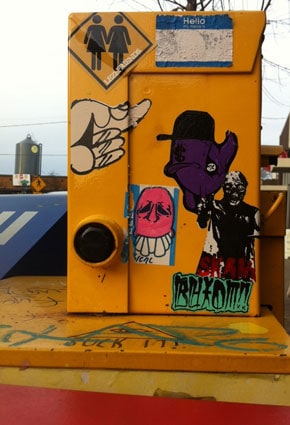Out and About: Steve in Barcelona (1 of 2)
I’m just back from a week in Barcelona for WebVisions, where I led a workshop on fieldwork, synthesis, and ideation, and gave a short talk about championing contextual research within your organization. I’ll be covering similar material coming up in a couple of months at WebVisions Chicago. Meanwhile, I had a bit of time to explore, and found Barcelona to be a beautiful and well-designed city. Here are some sample images, with more to follow in the next day or so (and the complete set on Flickr).

Bounty at La Boqueria market.

Pedestrian safety warning placed in context, as you step from the sidewalk into the street.

Obama British Africa Gin and Rum. Odd description here.






Stickers on the corrugated metal doors pulled down when a business is closed advertise what I assumed was a taxi services but in fact is for locksmiths. Why are locksmith services advertised with such verve?

Gaudi’s La Sagrada Fam??lia, under construction since 1882. Astonishing, even from the outside.

Known in the US as Ice Age: Continental Drift.

Marketing for something via Facebook.

A very modern cinema structure, down by the water, where all the buildings are new and ultra modern. While the whole place is a delicious mix of old and new, classic and modern, this area went just a bit too far into Mall. While this building is gorgeous, its siting and overall vibe is dehumanizing.












































